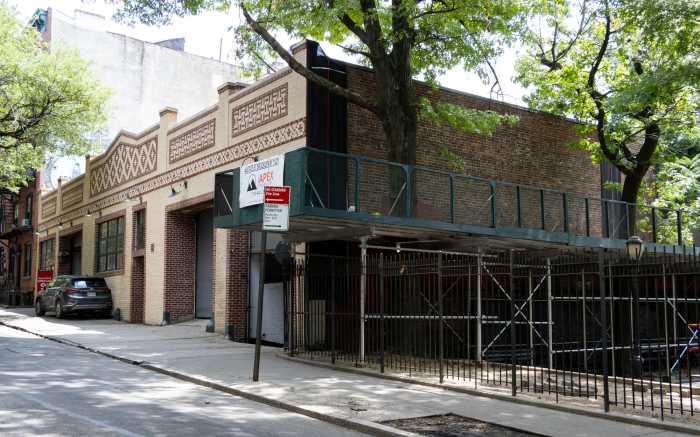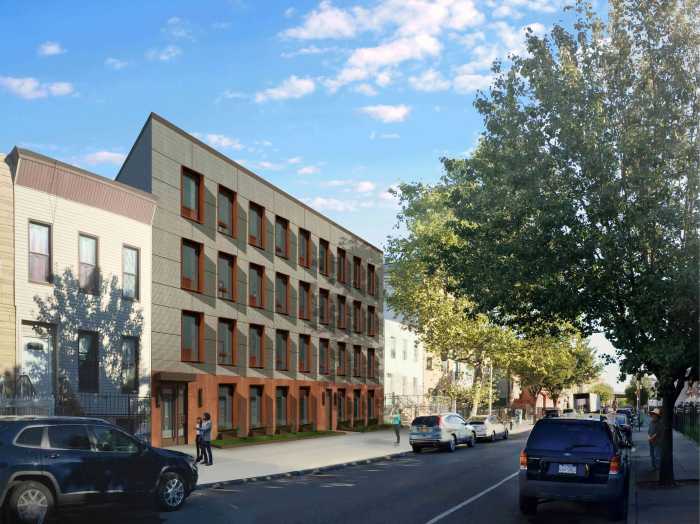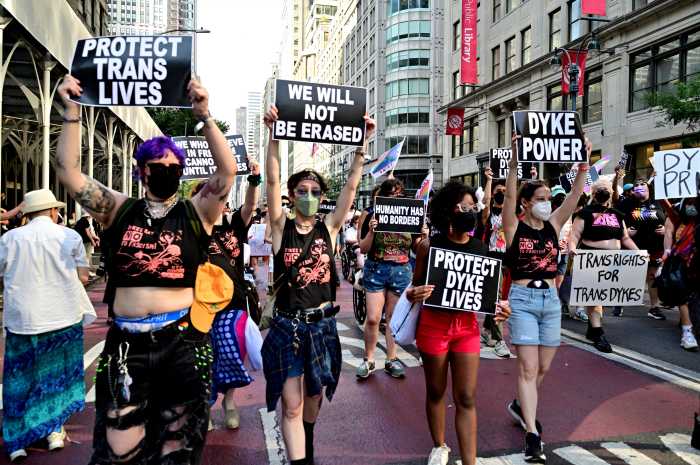If you fund BUILD, they will come … and support your project.
That’s the refrain being cited by opponents of developer Bruce Ratner’s
Atlantic Yards project, who this week uncovered tax filings that revealed
$5 million contributed by Ratner’s company to a local non-profit
group whose support of the arena, housing and office skyscraper project
has been key to much of the development’s public and political support.
The endorsements of Ratner’s project by the group Brooklyn United
for Innovative Local Development (BUILD) was bought by the developer,
according to Develop-Don’t Destroy Brooklyn (DDDB), a local group
that has been the leading opponent of Ratner’s plan.
The acceptance of Ratner’s so-called community benefits agreement
by BUILD, charges DDDB spokesman Daniel Goldstein, came after a promise
by Ratner to fund the group.
Dated Dec. 20, 2004, the 501-c3 filings were completed six months before
the CBA — a non-governmental agreement between a developer and community
members relating to a specific project — was announced.
Two executive members of BUILD, Marie Louis and Shalawn Langhorne, now
receive salaries of $100,000, according to the IRS filing, while the president
of the group, James Caldwell, earns $125,000 a year.
The tax documents were obtained by a community member under the Freedom
of Information Law and given to DDDB.
Goldstein said that whether or not the payments have been made in full,
it’s the promise that sullied any negotiations.
“It was committed to in the middle of a negotiation,” Goldstein
told The Papers. “That means that this group is absolutely compromised,
as is that CBA, and they’re clearly negotiating to benefit themselves,
not the community.
“Ratner has done his best to fabricate support,” Goldstein added.
“All this support he has starts with this community benefits agreement.”
The still-incomplete document, celebrated on June 27 with a public ceremony,
was signed by select community groups chosen to negotiate with the developer,
and the praise of Mayor Michael Bloomberg, Public Advocate Betsy Gotbaum,
Borough President Marty Markowitz, Assemblyman Roger Green, Comptroller
William Thompson and several City Council members.
Signatories included ACORN, the All-Faith Council of Brooklyn, the New
York State Association of Minority Contractors, the Downtown Educational
Consortium, the Downtown Brooklyn Advisory and Oversight Committee, and
public housing tenant associations.
No community groups that voiced opposition to the plan were invited to
the CBA negotiations, which began surreptitiously in April 2004.
On Sept. 3, The Papers reported that BUILD had been relocated to a Forest
City Ratner-owned property where it was operating rent-free, per the negotiations.
Greg LeRoy, executive director of Good Jobs First, a non-profit policy
group in Washington, D.C. that is involved in CBAs in Los Angeles, has
called the Atlantic Yards CBA a dubious agreement.
“Anytime you have negotiations in which there are competing self-interests,
and one side grants a favor to the other, that’s a red flag,”
he told The Papers earlier this month.
“Obviously, being impartial and objective in the negotiations is
something people strive for,” he said.
In a Brooklyn Papers article on Dec. 25, 2004, Louis denied receiving
money from Forest City Ratner.
“First of all, that allegation is so redundant, and we’ve refuted
it so many times that it’s ridiculous,” Louis told The Papers
then. “If someone looked at our bank accounts it would show that
we haven’t received any money from the developer.”
She did say at the time that if Ratner received the necessary approvals
to build Atlantic Yards, there could be a payroll spot for BUILD.
She again denied the charge last week in an interview with radio reporter
Brian Lehrer on his CUNY-TV program.
But the IRS filing in which BUILD requested tax exemption and status as
a 501-c3 organization, which were dated by a lawyer for the organization
and postmarked Jan. 12, 2005, claimed that while the group’s 2004
income was just $10,471, its officers were under the impression, as stated
in the columns for “proposed budget for 2 years,” that they
would receive $1.864 million in 2005, and $1.957 million in 2006. The
document states the remainder of the $5 million is for operating expenses.
Forest City Ratner officials did not return repeated calls for comment
for this article.
Neither did Louis, who is also the spokeswoman for BUILD.
At a public hearing on Nov. 29, 2004, the project’s manager, Forest
City Ratner Executive Vice President James Stuckey, was asked if his company
had paid BUILD and ACORN for their support.
“Why don’t you ask them yourself?” he responded, smiling,
as audience members booed loudly. Some hecklers called back, “You
didn’t answer the question!”
























